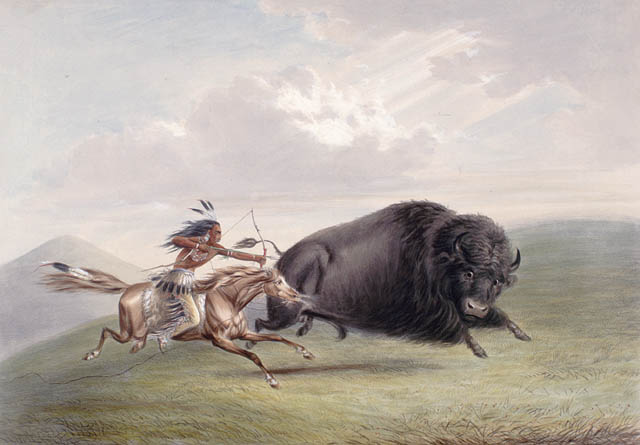 Lacey Middlestead is a Montana native and freelance writer currently living in Helena, Mont. She loves meeting new people and helping share their stories. When she’s not busy writing articles for newspapers like the Independent Record and Helena Vigilante, she can usually be found indulging in her second greatest passion–playing in the Montana wilderness. She loves skiing and snowmobiling in the winter and four wheeling, hiking, boating, and riding dirt bikes in the summer.
Lacey Middlestead is a Montana native and freelance writer currently living in Helena, Mont. She loves meeting new people and helping share their stories. When she’s not busy writing articles for newspapers like the Independent Record and Helena Vigilante, she can usually be found indulging in her second greatest passion–playing in the Montana wilderness. She loves skiing and snowmobiling in the winter and four wheeling, hiking, boating, and riding dirt bikes in the summer.
"I'm in love with Montana. For other states I have admiration, respect, recognition, even some affection. But with Montana it is love. And it's difficult to analyze love when you're in it." ~John Steinbeck
For those of us blessed enough to have been born and raised in Montana, this quote makes perfect sense. And even for the most eloquent of Montana writers, it is probably the closest description we'd ever be able to piece together to explain how we feel about where we live. But for those who are only curious travelers who stumble upon our state, only one visit is necessary to appreciate Steinbeck's quote.
Native Montanans love their home and we wouldn't trade it for any other place on earth. We love it, but sometimes it is easy to take for granted just how lucky we truly are. We take for granted the clear summer skies, the pure coursing rivers, the untouched winter powder, and the utter stillness and silence that is often just outside our very doors. This weekend, two people made me pause and reconsider some of the things that I’ve started to overlook because Montana's beauty and splendor is so encompassing.
This past weekend Andy's (my fiancé) cousin and his girlfriend paid a visit from California. And whether they wanted to or were even prepared, we planned a weekend for them filled with non-stop winter activities. They told us they wanted to see and play in snow.........so we brought them to the snow!
Our weekend began Friday morning at Discovery Ski Area. Andy and are both avid skiers, although sometimes our snowmobiling takes precedence. Andy's cousin, Alex, is a snowboarder and rented a board for the day. His girlfriend, Alyssa, had never boarded or skied before so we set her up with some lessons in the morning while the three of us made a few runs. It felt great to be up on the hill again for the first time this season.
We took at break at 1 p.m. to check on Alyssa and grab a bite to eat. Unlike how I would've been in her position, Alyssa was smiling from ear to ear when we greeted her after her lessons. She said she'd only fallen a few times! But despite her elation over successfully beginning to learn to ski, I think her favorite moment of the day was discovering the plump little chocolate chip cookies in the cafeteria. I swear she could've scarfed down a whole tray of them.......finally a girl after my own heart!
We did a few more runs after lunch, which were slower than my normal pace since Alyssa was still practicing her technique. But not being in a mad dash to cram in as many runs as possible enabled me to pause from time to time and look out at the blue bird sky day that God must have delivered just for our guests as well as snowy Georgetown Lake below. When the lifts finally closed at 4 p.m. we all felt tired but accomplished.
To reward ourselves for a successful ski day, especially for first-time skier Alyssa, we made a pit stop at Fairmont Hot Springs on the way home to take a soak. Although our mad dash across the frozen deck to the outdoor pool was chilly, the naturally heated water quickly warmed us all the way through. We were reluctant to leave the warmth but our pruned bodies eventually told us it was time to head home. When we finally hit Helena again, we bid Alex and Alyssa goodnight and told them to rest up.......the real winter fun would start in the morning!
Saturday morning came way too early, even for me, but we had a full day of snowmobiling and snowshoeing ahead of us so there was no time for sleeping in. After grabbing some bagels and cream cheese from the Bagel Company, we threw our gear bags in the truck and headed over Flescher Pass towards Lincoln with our 20 ft enclosed sled trailer in tow.
I think it's safe to say that Alex had secretly planned this entire adventure north purely out of anticipation of riding a sled for the first time. But who can really blame him? Even though he may have been freezing, he jumped right out of the truck to help Andy unload the sleds. Then it was time to suit up! It was in the high 30s when we finally left the parking lot for our ride. That's a bit too warm for my liking to sled in, but if it had been the 5-10 degrees Andy and I often ride in, Alex and Alyssa might have backed out entirely. We made a nice big loop on the trails that afternoon--making sure to get some elevation under us so they could see the awesome views and landscapes around us. I made frequent stops to snap their picture because I knew it would be a day they'd want to remember.
Riding down the trails at a far slower speed than normal made me look around and take in everything that I'm so used to blowing by in a flurry of white. With my dad being a dealer, I literally grew up around snowmobiling but seeing the smiles on Alex and Alyssa's faces that day reminded me how much I probably take for granted. Even when we weren't stopping for photos, I'm 100% positive Alex was rocking a big cheesy grin under his helmet.
We made it back to the truck with just enough daylight left to do some snowshoeing. After delayering our gear a tad, we strapped our shoes on and trudged off through the trees. I led us to a rather steep hill that I thought would be challenging to walk up. I’m pretty sure all of us stumbled, or in Alex’s case face-planted, the snow at least once. But we were all smiles the whole way. Our growling bellies finally signaled to us that it was time to wrap up the hike and go find some snacks.
Our weekend came to a close far too quickly for me. After returning their rented snowshoes on Sunday afternoon, we said goodbye to Alex and Alyssa. While they would get to rest their tired bodies on the plane, Andy and I still had a game of hockey to prep for later that night because clearly we just can’t get enough of our winter sports. Mine and Andy’s weekends are usually pretty jam packed during the winter months, but we don’t normally participate in four different winter sports in just two days……….but we certainly didn’t let Alex and Alyssa in on that. We played it cool like that was our normal routine. The truth was we crashed hard after our hockey game. And nearly a week later I still feel like I’m trying to recuperate.
It’s impossibe to show outsiders all the things you love about Montana in only a few days, but I think we gave Alex and Alyssa a good taste of what winter here is like. This September we plan on introducing them to fresh water surfing behind the boat when they travel back here to attend mine and Andy’s wedding. I can’t wait!
 The chance to ski and snowboard in Butte will be offered for one day only as part of the Mining City's first ever Rail Jam.
The chance to ski and snowboard in Butte will be offered for one day only as part of the Mining City's first ever Rail Jam. Native American activists gathered in Montana's capital on Tuesday to protest the deaths of hundreds of Yellowstone National Park bison killed this year to ease the worries of Montana ranchers about a cattle disease carried by many park buffalo.
Native American activists gathered in Montana's capital on Tuesday to protest the deaths of hundreds of Yellowstone National Park bison killed this year to ease the worries of Montana ranchers about a cattle disease carried by many park buffalo.